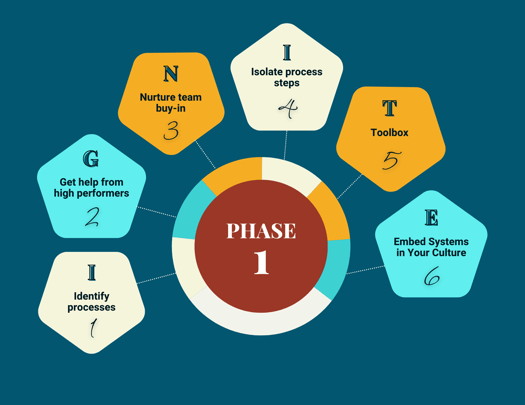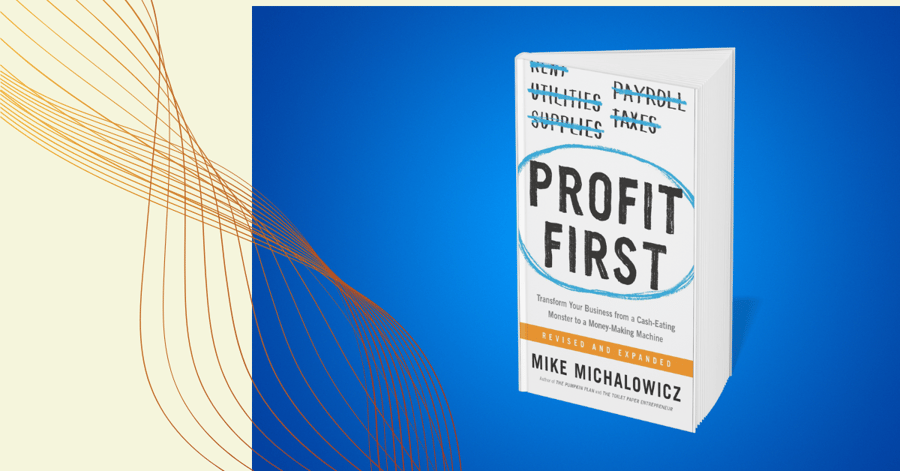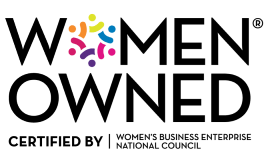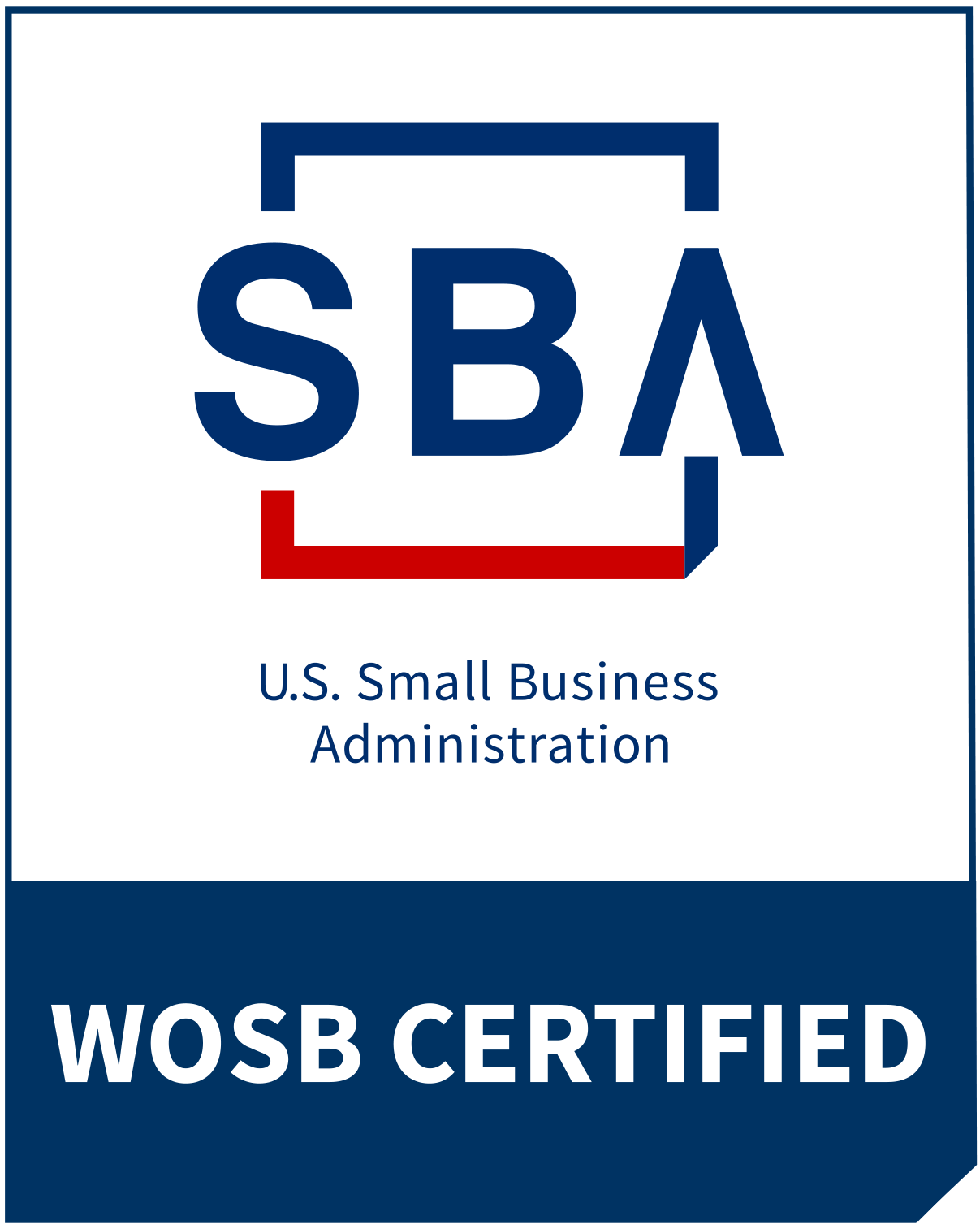Make Your Business Work for You: The 3S Profit Optimizer (Part 2)
- Karen Hairston
- 0 Comments
- May 23, 2024
Make Your Business Work for You: The 3S Profit Optimizer (Part 2)
This article is a continuation of Make Your Business Work for You: The 3S Profit Optimizer (Part 1). If you haven’t read that, I recommend doing that now.
Assuming you read Part 1 about Phase 1 of The 3S Profit Optimizer, you should now be familiar with documenting your core processes. Before diving into Phase 2, let’s do a quick review of The 3S Profit Optimizer.
The 3S Profit Optimizer: Simplify, Systematize, and Scale
My signature 3S Profit Optimizer is a proven framework that will simplify, systematize, and supercharge your business’s scalability and profits. It consists of three key phases:
Phase 1: Secure & Sign More Clients
Phase 2: Simplify & Systematize Operations
Phase 3: Supercharge Scalability & Profits
Phases 1 and 2 will help move you from Steady (but Stuck) to Scalable, and Phase 3 will move you from Scalable to Saleable.
The overall approach of the 3S Profit Optimizer is to Document It, Use It, and Optimize It (DUO). In Phases 1 and 2, you’ll document and use the processes, and in Phase 3, you’ll optimize.
Recall that Phase 1 was about documenting and using the processes that touch clients, e.g., marketing, sales, client onboarding, etc.
The great thing about Phase 2 of The 3S Profit Optimizer is that it’s the same process as Phase 1, except now you’ll be working on the support processes. A future article will cover Phase 3 of The 3S Profit Optimizer.
Phase 2: Simplify and Systematize Operations
The goal of Phase 2 is to document and organize the processes and systems required to scale.
Phase 2 of the 3S Profit Optimizer begins after you’ve documented the core processes and the processes are up and running without being dependent on one person.
I refer to the systems required to scale as support processes. The support processes don’t directly generate revenue, but they help a business execute core processes. For example, human resources processes support core objectives by recruiting the right people to fulfill essential roles.
As in Phase 1, the focus is not on creating new processes or re-engineering existing ones; it is on increasing consistency! However, in Phase 2, there is one exception to not creating new processes. If there are no HR processes, especially hiring and onboarding, create these processes now!
As in Phase 1, Phase 2 consists of 6 steps that can be remembered using the acronym IGNITE!

Step 1: Identify Processes
In this step, you will identify the areas related to supporting the core processes, brainstorm the processes related to these areas, and select one process to document.
Identify Support Areas
Gather 3-7 people who are involved with your support processes and map out the high-level flow of each. Your business may have some additional areas or call them something different, but at a minimum, these are the 3 areas for which you need to identify processes.
1. Finance
2. Human Resources
3. Management
Remember, you do not need expensive software to map these out. You can take the low-tech route and use sticky notes or flipchart paper. For in-person meetings, I prefer sticky notes. They’re easy to move around to change the order or add or subtract processes or steps. I also recommend putting the sticky notes on flipchart paper so you can easily move your entire process or flow to take it to another conference room or person’s desk. It’s also helpful to take a photo of the flipchart when you’re finished so you can track the different versions. The photo also provides a record of it just in case any of the sticky notes fall off!
Brainstorm Processes within Each Area
For these systems, you may want to start with Finance. Finance people tend to be very process-oriented, so you’ll get less pushback. With Finance, there are many repeated processes, so it may help to brainstorm them by their frequency. For example, list weekly processes, biweekly processes, monthly processes, etc. Weekly processes might include processes such as paying expenses and reconciling accounts, while one biweekly process might be payroll, and you may run and review certain reports monthly or quarterly. Select 5-7 of the main processes from the Finance area.
Then, brainstorm the processes for Human Resources, especially the processes related to hiring, onboarding, and managing your team. Human Resources is a critical area—without a team, you have no one to do the work! When you are scaling, you need to have processes in place to hire new people who are a good fit and get them onboarded quickly. Other examples of Human Resources processes are performance reviews and vacation requests.
Remember, Human Resources is where there is an exception to the “rule” that you’re only looking at existing processes. If you do not have processes in place for hiring or onboarding, make sure to spend some time creating and documenting those processes. When you’re finished brainstorming, select 5-7 main processes from Human Resources.
Next is Management. This area refers to strategic goal setting and measuring progress. It also includes meeting rhythms and agendas. From daily team meetings to annual meetings, each type of meeting should have a purpose and an agenda. Many resources related to meetings exist, e.g., Scaling Up, The 12-Week Year, and the Entrepreneurial Operating System (EOS). Brainstorm the processes in this area, and then select 5-7 main processes in the Management area.
For all of these areas, only focus on the main processes. Don’t worry about something that occurs very rarely. If you’re having challenges prioritizing and selecting which processes are your main processes, keep the Pareto Principle in mind. The Pareto Principle states that 80% of your results are from 20% of your processes and systems. At the end of this step, you should have no more than 20 processes in total across all of these areas.
Select One Process to Document
To wrap up this step, you’ll identify which process you’ll document first. You can either use your prioritization method of choice, select a process based on a current business problem, or take a relaxed approach and just pick one you think will be easy to do to get a quick win.
After you’ve gone through the IGNITE steps with one process, you may be able to document more than one process at a time if you have the capacity. However, don’t worry if you can only document one at a time. You still have a business to run! Sometimes, you have to slow down to speed up!
Step 2: Get Help from High Performers
Modeling the processes of your highest-performing team members is the best-kept secret to rapid systems development! For Step 2, identify and assign the team member who is best at a process to help document the process they currently use.
Step 3: Nurture Team Buy-In
Although you should have already started this in Phase 1, it’s most likely that different people are involved in your support processes than your core processes. So, you’ll have to do it again now. As with most business changes, if you want them to stick, you need buy-in from your team. Obtaining and nurturing buy-in should be planned for and started early and should not be an afterthought. It is the beginning of building a systems-thinking culture. People support what they help to create, so the more you can involve different team members upfront, the less resistance you’ll face later. Also, make sure you’re making this relevant to your team involved with the support processes. It will not necessarily be a duplicate of what you did in Phase 1.
In this step, identify who will lead the change management activities. It may or may not be the same person from Phase 1, but if you identified a Systems Champion in Phase 1, they can help here too. For more information on Systems Champions, see Scaling Made Simple: The Systems Champion SolutionThe Systems Champion Solution. This person and the leadership team need to know the selling points of a systems-thinking culture, including the benefits for the team and the business. The lead for the change management activities will introduce this new way of thinking to the team and let them know what’s happening and how they may be asked to be involved. The goal is to get as many people as possible on board now so there is less kicking and screaming later.
If change management is a new topic for you, a quick internet search will provide many resources.
Step 4: Isolate Process Steps
Let me start by saying that capturing processes and systems is a two-person job! In this step, someone will capture the process steps used by the high-performing team member identified in Step 2 while the high performer performs the process. To extract and isolate the process steps, I recommend either recording a video of the high performer performing the task or having someone take notes while observing the high performer perform the process. If you’ve identified a Systems Champion, they would be the person who records or takes notes.
The tasks in Step 4 include the following:
1. Record the task as it is being performed.
2. Create a step-by-step document based on the recording.
3. Review the document for accuracy compared to the recording.
4. Have a few team members who perform this work use the document and ask for feedback.
5. Revise the document as necessary based on the input.
6. Use the recording and document to train other team members on the process.
Tips for Documenting the Process Based on the Recording
1. Include the Basics. For each process documented, include the name of the process or system, the intended results, who should use the system, and the steps.
2. Keep it simple. Only include the necessary information, no more, no less. Define any business terms that new hires might not understand. Number each step in the process so it’s easy to follow.
3. Stay Consistent. Use consistent language and formatting across all processes and systems.
At this point, some of you might be cringing because you think you must create a flowchart. My response is, “NO!” Don’t waste time doing one now. They can be challenging to create correctly, and many people do not know how to read them, so time is better spent recording and documenting more processes than wrestling with flowcharts. The goal is to have something accurate and readable for the team, so a clear, concise document is usually all that’s needed.
Step 5: Toolbox (Systems and PM software)
You should have selected and set up your systems and project management software in Phase 1. In Phase 2, you’ll just need to add the new processes to the systems management software in an organized manner so they’re accessible to all team members who need to have access to them. This helps to avoid the excuse of “I didn’t know,” makes team members accountable, and lays the foundation for consistent high performance across the board. It’s less likely with the support tasks, but if applicable, as you complete the documentation of each process, add the information to the systems management software and link to it from the project management software as appropriate.
Step 6: Embed Systems in Your Culture
As with Step 3, you should’ve already started Step 6 in Phase 1, but since you’re working with different team members, you will be doing it again. In Step 3, you introduced the concept of a systems-thinking culture and the upcoming changes. Now, it’s time to embed the systems in your culture so that all the hard work you’ve been doing documenting systems actually gets used. It’s up to you whether you want to do Step 6 after each process is documented and stored or batch a few of them and roll them out together.
In Step 6, it’s time to train the team on the documented processes so they can begin using them, introduce the team to where all the information is stored and any related software, tools, and templates, and begin managing the team using the processes and systems you’ve just documented.
This step may be the most challenging because you are likely to encounter some resistance. But you need to remember why you’re doing this and hold people accountable. The processes and systems need to become ingrained such that everyone knows, “This is how we do it here.” The majority of your team will get on board, but you may have at least one team member who refuses to follow the processes. In this case, you’ll need to pull out your performance management processes to deal with the situation, but opting out of following the processes in systems should not be an option.
Continuing Your Systematization Journey
Implementing effective business systems is an ongoing journey that requires consistent effort and continuous improvement. Upon completing Phase 2 of the 3S Profit Optimizer, you will be equipped to scale your business at a pace that aligns with your goals. The most successful companies are those that can scale without compromising quality or profitability. By harnessing the power of well-designed systems, you will set your business on a path toward joining the ranks of top-performing enterprises. Are you ready to elevate your business to new heights and embark on this transformative journey? I hope so!
Stay tuned for Phase 3!
Is Your Business Growing But You Feel Like It’s Falling Apart?
Feeling the strain of business growth? You're not alone. Many successful businesses face these challenges. It's often the little things that cause big headaches. Suddenly, your tried-and-true methods don't work anymore, profits shrink, customers are complaining, and you're constantly firefighting.
The key lies in fine-tuning your systems to support your growth. My 3S Profit Optimizer framework helps to secure more clients, streamline operations, and supercharge scalability. I've helped numerous businesses overcome these hurdles, and I'd love to see how I can help you succeed.
Let’s minimize the growing pains and prevent them from reflecting poorly on your business. To learn how to have more freedom, more control, and more opportunities to earn income take action now and click below.
Related Posts

Make Your Business Work for You: The 3S Profit Optimizer (Part 1)




